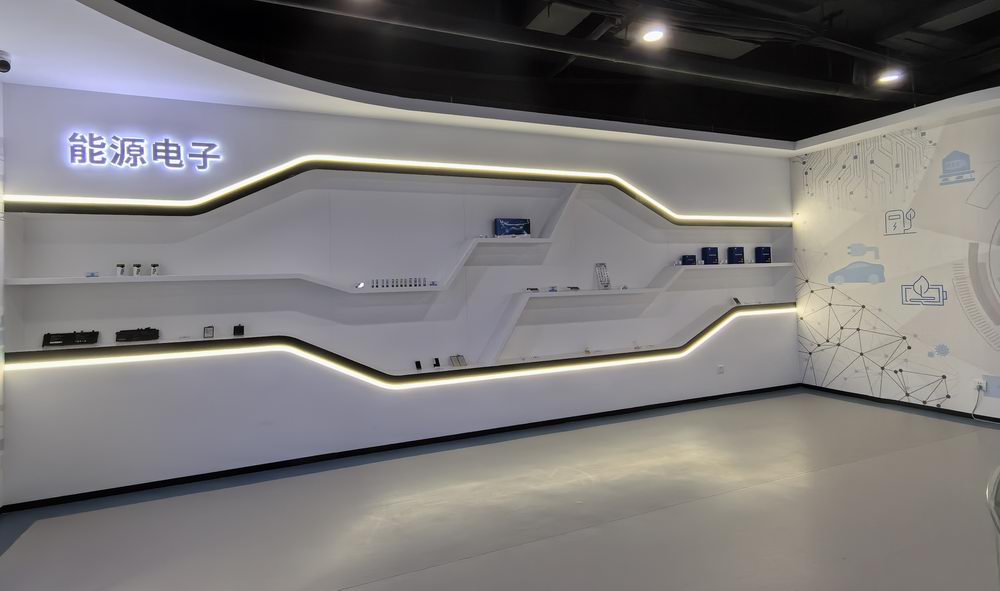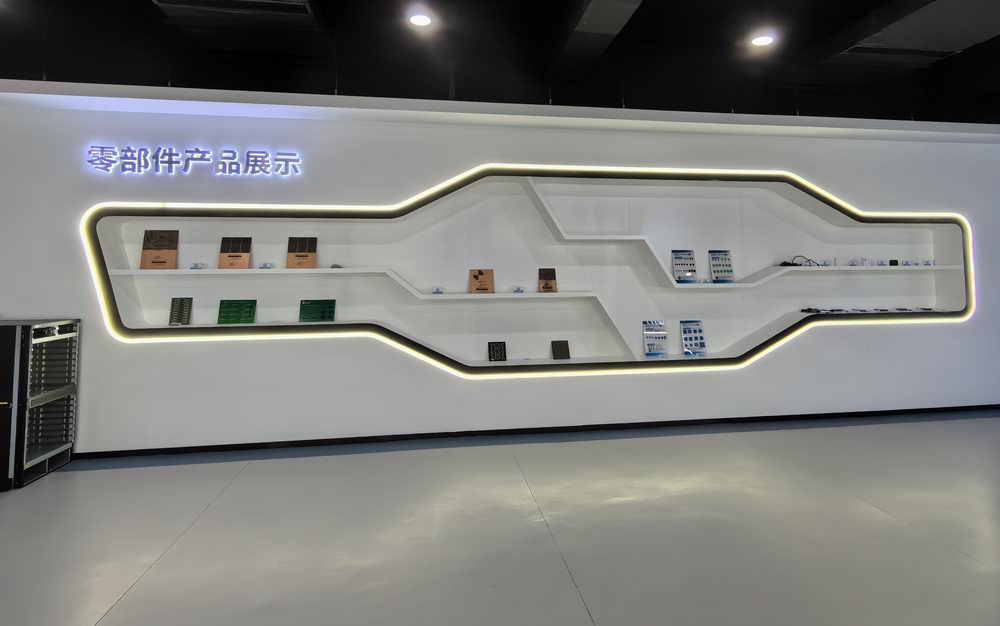China's Path to Foreign Trade Transformation

China's journey in foreign trade has been remarkable. The country's transformation began with strategic reforms that reshaped its economic landscape. The late 20th century saw China embracing global markets, leading to significant growth in exports and imports. The establishment of the National Foreign Trade Transformation and Upgrading Demonstration Base, particularly in the Huizhou Zhongkai High-tech Zone, played a crucial role. The electronic information cloud platform offered by the zone has been pivotal in boosting business development, making it easier for companies to thrive in a competitive environment.
Historical Context and Initial Reforms

Early Trade Policies
China's early trade policies set the stage for its transformation. The Old China Trade marked the beginning of relations between the United States and East Asia. This era included maritime fur trade and illegal opium trafficking. American traders found success selling Spanish bullion, ginseng, and furs to China. These exchanges laid the foundation for a more extensive and regulated trade relationship.
Economic Reforms of the Late 20th Century
The late 20th century brought significant economic reforms to China. Leaders initiated changes that opened the economy to global markets. These reforms encouraged foreign investments and boosted economic growth. The focus shifted from a closed economy to one that embraced international trade.
Opening Up Policy
China's Opening Up Policy played a crucial role in its trade transformation. This policy aimed to integrate China into the global economy. The government established Special Economic Zones (SEZs) to attract foreign investments. SEZs offered tax incentives and relaxed regulations, making them attractive to international businesses.
Initial Strategies for Trade Transformation
China implemented several strategies to transform its trade landscape. These strategies focused on creating favorable conditions for trade and investment.
Special Economic Zones
Special Economic Zones became a cornerstone of China's trade strategy. These zones provided a controlled environment for economic experimentation. Businesses in SEZs enjoyed benefits like reduced tariffs and simplified customs procedures. The success of SEZs demonstrated the potential of open-market policies.
Early Trade Agreements
Early trade agreements further facilitated China's trade transformation. These agreements established partnerships with key trading nations. They helped reduce trade barriers and opened new markets for Chinese goods. The agreements laid the groundwork for China's future as a global trading powerhouse.
The Huizhou Zhongkai High-tech Zone emerged as a pivotal player in this transformation. The zone's National Foreign Trade Transformation and Upgrading Base supported enterprises with an electronic information cloud platform. This platform offered resources and tools that enhanced business development. Companies in the zone thrived in a competitive environment, thanks to this innovative support system.
Key Policies and Initiatives
Shanghai Free Trade Zone
Establishment and Objectives
The Shanghai Free Trade Zone (FTZ) stands as a symbol of China's commitment to trade innovation. The government launched the zone to experiment with new policies and practices that could boost economic growth. The primary goal involved creating a more open and efficient trade environment. The zone introduced a "negative list" model for foreign investment, which simplified the approval process. This approach allowed businesses to operate with fewer restrictions, encouraging more foreign companies to invest in China.
Impact on Trade Efficiency
The Shanghai FTZ has had a significant impact on trade efficiency. Businesses within the zone experienced reduced administrative burdens due to streamlined processes. The zone's policies cut red tape, making it easier for companies to navigate regulations. Financial reform experiments within the FTZ also contributed to a more dynamic business environment. These changes led to increased trade activities and attracted more international businesses to the region.
Adoption of the Single-Window System
Implementation Process
China's adoption of the Single-Window System marked a major step forward in trade facilitation. The system aimed to simplify the process for international trade by providing a single entry point for all trade-related information. The implementation involved integrating various government agencies into one platform. This integration reduced the need for businesses to submit documents to multiple authorities, saving time and resources.
Benefits for Trade Innovation
The Single-Window System brought numerous benefits for trade innovation. Businesses found the system user-friendly, allowing them to complete trade procedures more efficiently. The streamlined process reduced delays and improved the overall speed of trade transactions. Companies could focus more on innovation and less on bureaucratic hurdles. The system played a crucial role in enhancing China's competitiveness in the global market.
The Huizhou Zhongkai High-tech Zone's National Foreign Trade Transformation and Upgrading Base provided significant support to enterprises. The electronic information cloud platform offered essential tools and resources for business development. Companies in the zone benefited from this innovative support system, which helped them thrive in a competitive environment. The platform's role in facilitating trade and innovation underscored its importance in China's trade transformation journey.
Role of Key Regions

Huizhou Zhongkai High-tech Zone
Contributions to Trade Transformation
The Huizhou Zhongkai High-tech Zone plays a big role in China's trade transformation. The zone offers a strategic location that attracts businesses looking for growth opportunities. Companies like Desai and Yiwei Lithium Energy have thrived here by using the zone's resources. The zone provides an environment that supports technological advancements. Businesses benefit from the zone's focus on innovation and market trends. The zone's commitment to sustainable growth empowers enterprises to meet evolving consumer preferences.
The State Council Approval of Huizhou Zhongkai High-tech Zone in 1992 marked a significant milestone. This approval highlighted the zone's potential in contributing to regional development. The strategic location of the zone has been a key factor in its success. The zone's infrastructure and support systems make it an attractive destination for businesses. Companies find the zone's environment conducive to trade enhancement and innovation.
Case Studies and Examples
Several case studies highlight the success stories within the Huizhou Zhongkai High-tech Zone. Desai and Yiwei Lithium Energy serves as a prime example. This company leveraged the zone's resources to achieve successful innovation. The zone's support for technological advancements played a crucial role in the company's growth. The electronic information cloud platform offered by the zone provided essential tools for business development. This platform helped companies thrive in a competitive environment.
Another example involves enterprises focusing on future growth and trade enhancement. The zone empowers these businesses to align with market trends. The zone's commitment to innovation ensures that companies stay ahead of the curve. The supportive environment fosters creativity and encourages enterprises to explore new opportunities. The zone's resources and infrastructure contribute to the overall success of businesses operating within its boundaries.
National Foreign Trade Transformation and Upgrading Demonstration Base
Strategic Importance
The National Foreign Trade Transformation and Upgrading Demonstration Base holds strategic importance in China's trade landscape. This base supports enterprises by providing a platform for growth and development. The base's focus on innovation and trade enhancement aligns with China's broader economic goals. Businesses find the base's resources invaluable in navigating the complexities of international trade.
The base's strategic location enhances its significance. Companies benefit from the base's proximity to key markets and trade routes. The base's infrastructure supports efficient trade operations. Enterprises leverage the base's resources to expand their reach and explore new opportunities. The base's role in facilitating trade transformation underscores its importance in China's economic journey.
Regional Developments
Regional developments within the National Foreign Trade Transformation and Upgrading Demonstration Base contribute to its success. The base's infrastructure continues to evolve, supporting businesses in their growth endeavors. Enterprises benefit from the base's commitment to providing a conducive environment for trade. The base's focus on innovation ensures that companies remain competitive in the global market.
The base's electronic information cloud platform plays a pivotal role in supporting enterprises. This platform offers tools and resources that enhance business development. Companies find the platform user-friendly and efficient. The platform's role in facilitating trade and innovation highlights its significance in the base's operations. The base's commitment to regional development ensures that businesses thrive in a dynamic environment.
Current Position and Future Prospects
China's Position in Global Trade
Analysis of Current Trade Statistics
China stands strong in global trade. The country achieved total exports of $3,362 billion and imports of $2,684 billion. This results in a positive trade balance of $678 billion. China's trade growth reached 12.13%, which aligns closely with the world growth rate of 12.59%. The GDP of China is a staggering $17.8 trillion. Exports account for 19.94% of the GDP, while imports make up 17.36%. These numbers show China's robust engagement in international markets.
Diverse Trading Partners
China's trading partners are diverse and numerous. The country engages with nations across continents. This diversity helps stabilize China's trade dynamics. Different regions offer unique opportunities for growth. China continues to expand its network of partnerships. This approach ensures resilience against global economic shifts.
Future Prospects and Challenges
Emerging Markets and Opportunities
Emerging markets present exciting opportunities for China. New regions open doors for expansion. China explores markets in Africa, Latin America, and Southeast Asia. These areas offer untapped potential for trade. Companies in China can benefit from these growing economies. The focus on innovation and technology enhances competitiveness.
Potential Obstacles and Solutions
The Huizhou Zhongkai High-tech Zone plays a vital role here. The National Foreign Trade Transformation and Upgrading Base supports businesses with an electronic information cloud platform.
The future looks promising for China's trade journey. Opportunities abound, and solutions are within reach. The path forward involves strategic planning and innovation. China's position in global trade continues to evolve. The journey reflects resilience and adaptability.
China's transformation in foreign trade showcases a remarkable journey. The Huizhou Zhongkai High-tech Zone plays a vital role. The electronic information cloud platform supports businesses, boosting growth and innovation. Companies thrive in a competitive market with these resources. China's future prospects look promising. Opportunities abound despite challenges like trade disputes. Technological advancements drive steady growth. This journey attracts advanced talent and factors of production. China's path reflects resilience and adaptability. The global impact continues to evolve, shaping the future of international trade.
See Also
Deciphering the Foundation of National Foreign Trade Transformation
The Impact of Zhongkai High-tech Zone on Foreign Trade Evolution
Unveiling Economic Expansion via National Foreign Trade Transformation Hub
Revolutionizing Commerce: The Influence of Zhongkai High-tech Zone
Investigating the Evolution of National Foreign Trade in Zhongkai High-tech Zone
Zhongkai High tech Zone National foreign trade transformation and Upgradi Base(Electronic Information)Cloud Platform.
Address: Zhongkai High-tech Zone,Huizhou City ,Guangdong,China
E-mail: huizhoueii@163.com 13510001271@163.com
Tel: +86-0752-3279220 Mobile: +86-13510001271


